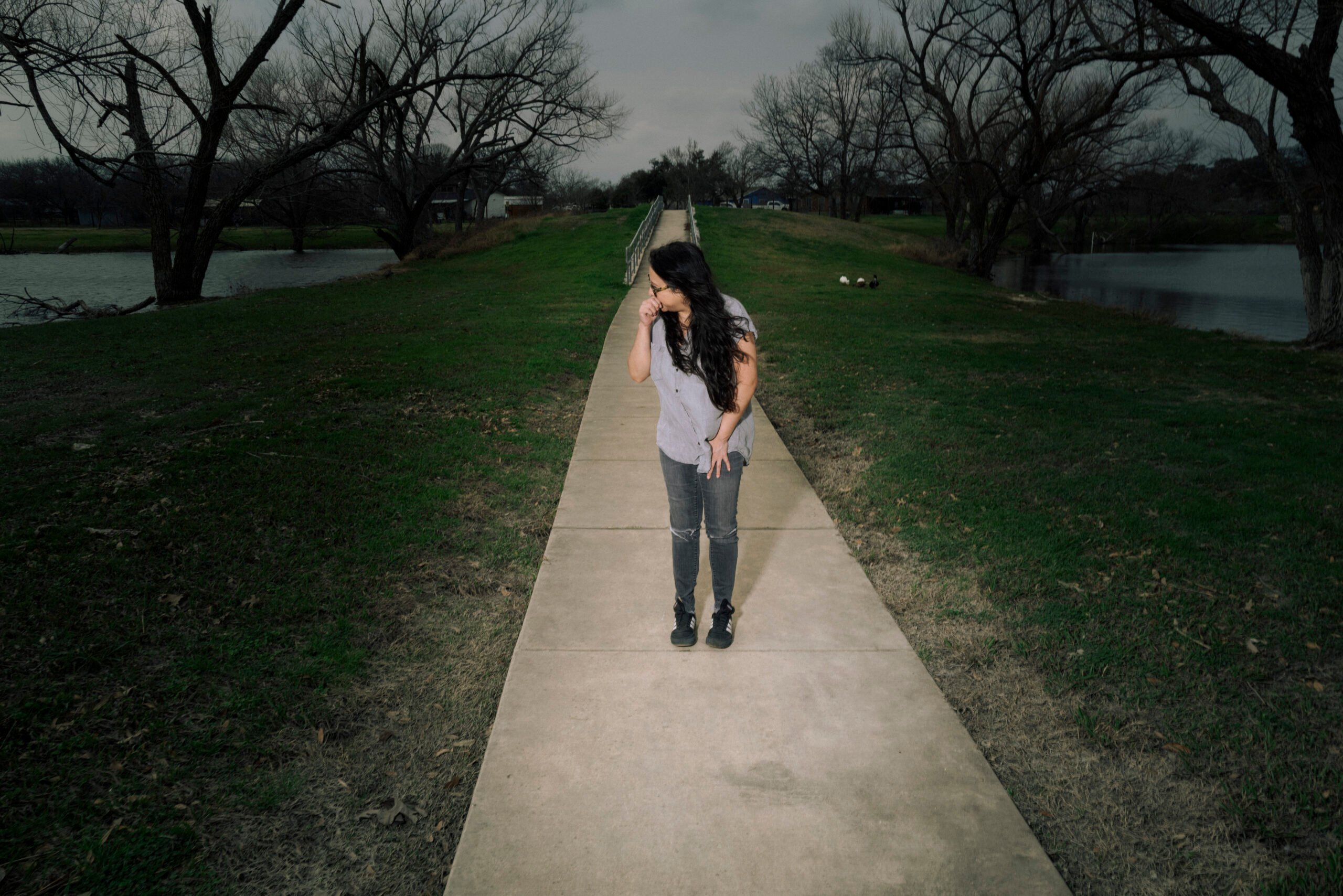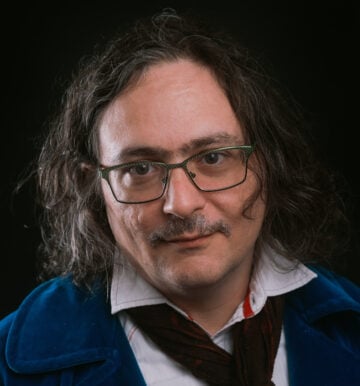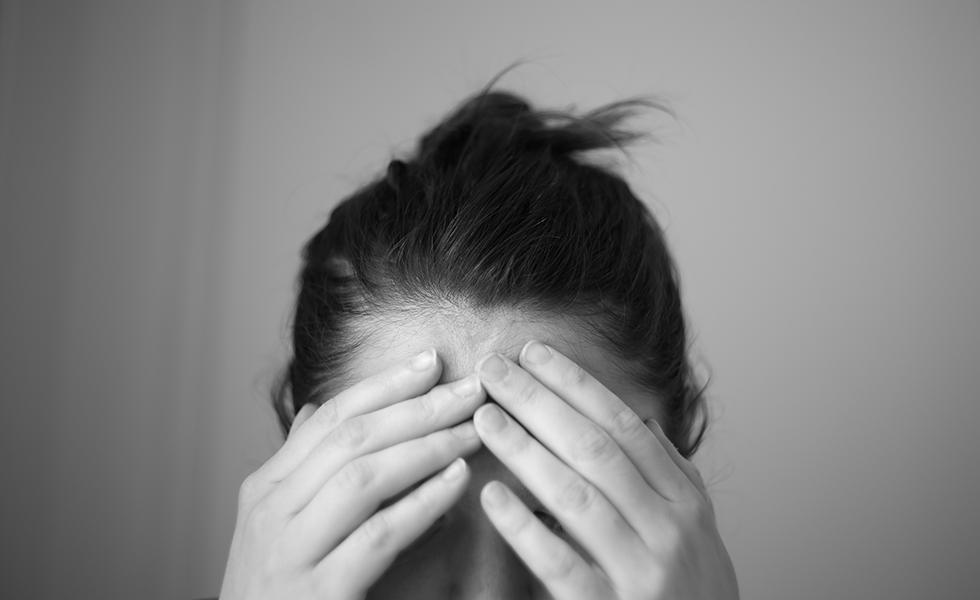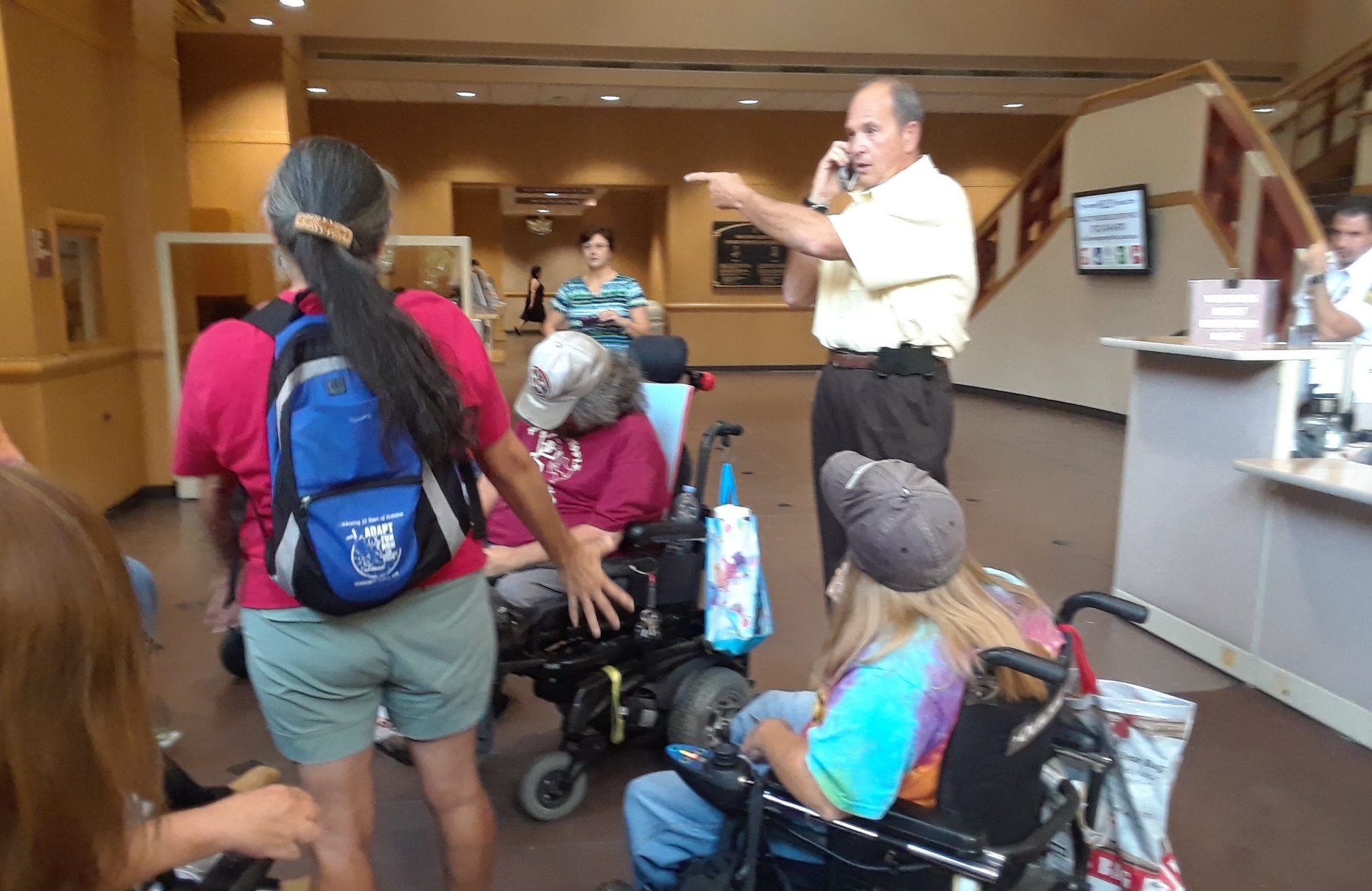Most people survive the Coronavirus with their kidneys intact. But not 34-year-old Austin resident Vanessa Ramos.
An experienced community organizer with nonprofits like the Sierra Club, Ramos was healthy and active before she got infected. Then she caught the COVID-19 virus in December 2021, and symptoms lingered through the new year despite her efforts to focus on healing and recovery.
“I was trying to prioritize my physical health because I couldn’t lift things; I couldn’t open things,” Ramos recalled. “I didn’t understand why I was getting weaker.”
In 2022, she kept getting sick over and over. Colds progressed to sinus infections. She had fluid in her ears after an infection, which required surgery. She even came down with walking pneumonia.
“I was getting an infection every month—different bacterial infections, different parts of my body,” Ramos said.
Initially, doctors didn’t dig deeper, perhaps because Ramos was uninsured. As with any chronic, debilitating condition, accessing medical care can be challenging; quality healthcare is most often tied to employment, and those who are chronically ill may no longer be able to work for long stretches of time.
It wasn’t until last year that a nurse finally gave her a diagnosis: long COVID. But by then her kidneys were failing. Ultimately, COVID—which can attack any organ, including the circulatory system itself—was likely the trigger for her to develop a rare form of vasculitis, a chronic swelling of the circulatory system that destroyed the functioning of her kidneys and continues to threaten her heart and lungs.
Ramos is out of work, spends up to nine hours a day hooked to a dialysis machine, and is awaiting a kidney transplant.
“We must have this national conversation. How are we going to deal with long COVID?”
The manifestation of Ramos’ long COVID is unique, which isn’t surprising: Experts interviewed for this story said each patient’s illness progresses differently, lending the condition a complexity that frequently hampers diagnosis. At the same time, Ramos is like millions of other Texans who caught the virus and never really got well. According to a 2023 survey from the Centers for Disease Control and Prevention (CDC), up to 15 percent of Texans have experienced some form of long COVID. While COVID-19 is perhaps most well-known for its effects on the respiratory system, it can target almost any part of the body and launch a direct attack on the immune system. Long COVID symptoms most frequently include brain fog, debilitating fatigue after any form of exertion, and extreme dizziness alongside symptoms of dysautonomia (nervous system problems) like vertigo, muscle weakness, and rapid heart rate.
To the Texans suffering from long COVID—or “long-haulers” as they’re sometimes called—it can seem like the world has moved on and forgotten them. Discussions of COVID mitigation—beyond periodic reminders to get booster shots—have all but disappeared from most public health discussions, and even many medical professionals no longer wear masks after CDC guidelines on masking began to ease in late 2021 and 2022.
Ziyad Al-Aly, chief of research and development at the Department of Veterans Affairs’ St. Louis Healthcare System and clinical epidemiologist at Washington University in St. Louis, stressed that masks were always meant to be a “stopgap measure” until we developed more sustainable ways of protecting people from getting sick.
“We lifted the stopgap, and we didn’t develop the permanent solutions, and I think that’s really one of the major failures of the pandemic,” Al-Aly said.
In testimony during a January congressional hearing, Al-Aly compared the impact of long COVID on American lives to that of heart disease and cancer and suggested it could ultimately cost the U.S. economy trillions.
“Just forgetting about it, sweeping it under the rug is not an option,” he told the Texas Observer. “We must have this national conversation. How are we going to deal with long COVID?”
When W. Michael Brode joined the faculty at Dell Medical School and the UT Health Austin program at the University of Texas at Austin, he worked in the hospital. A board-certified internal medicine specialist, Brode has long been interested in complex conditions that can affect multiple systems in the body. Starting in March 2020, he found himself on the front lines helping the hospital respond to the pandemic and, eventually, its aftermath. He’s currently the director of the UT Health Austin Post-COVID-19 treatment program.
“It was late 2020 when we noticed long COVID was a thing, and, at that point, we thought this would be a post-ICU clinic and be a transition clinic for people coming out of the hospital,” Brode said.
But rather than treat patients who were transitioning back to everyday life after a hospitalization, they quickly had to pivot to treating those with long COVID.
“This is really its own illness, lots of times affecting young, healthy people,” he said. “The traditional risk factors from getting sick and in the hospital with COVID are certainly different than developing long COVID.”
While hospitalization is a risk factor for developing long COVID, most of the patients Brode sees in his clinic were never hospitalized for COVID. This was true for Ramos and others we spoke with.
“It seems to be less about people’s underlying risk factors and more about their immune system, how their body reacts to this inflammation and activation from the virus,” he said.
A majority of the patients Brode sees are women, who he noted are most at risk for autoimmune diseases.
Al-Aly said those who suffer from long COVID can be divided into two categories. One type of patient, like those Brode described, suffers from brain fog, dysautonomia, and extreme exhaustion that’s referred to as “post-exertional malaise,” or PEM. Others are more likely to experience significant organ damage from COVID, which can occur in essentially any major system. Those in the latter group are often older or have preexisting conditions that may have left them more susceptible to the disease, but he stressed that anyone of any race, age, or gender could come down with either major form of long COVID. Some patients, like Ramos, can experience both types of symptoms.
“Long COVID and its myriad manifestations … can literally happen across a lifespan,” Al-Aly said. “And no demographic group [is] immune.”
He stressed that people underestimate the risk of COVID infections in general and, more specifically, the risk of repeated reinfection. Even mild cases can lead to long COVID, especially if it isn’t the first time a person has become sick. One study from Statistics Canada found that around 15 percent of people reported having persistent symptoms after their first infection. That number approaches 40 percent after the third and subsequent infections.
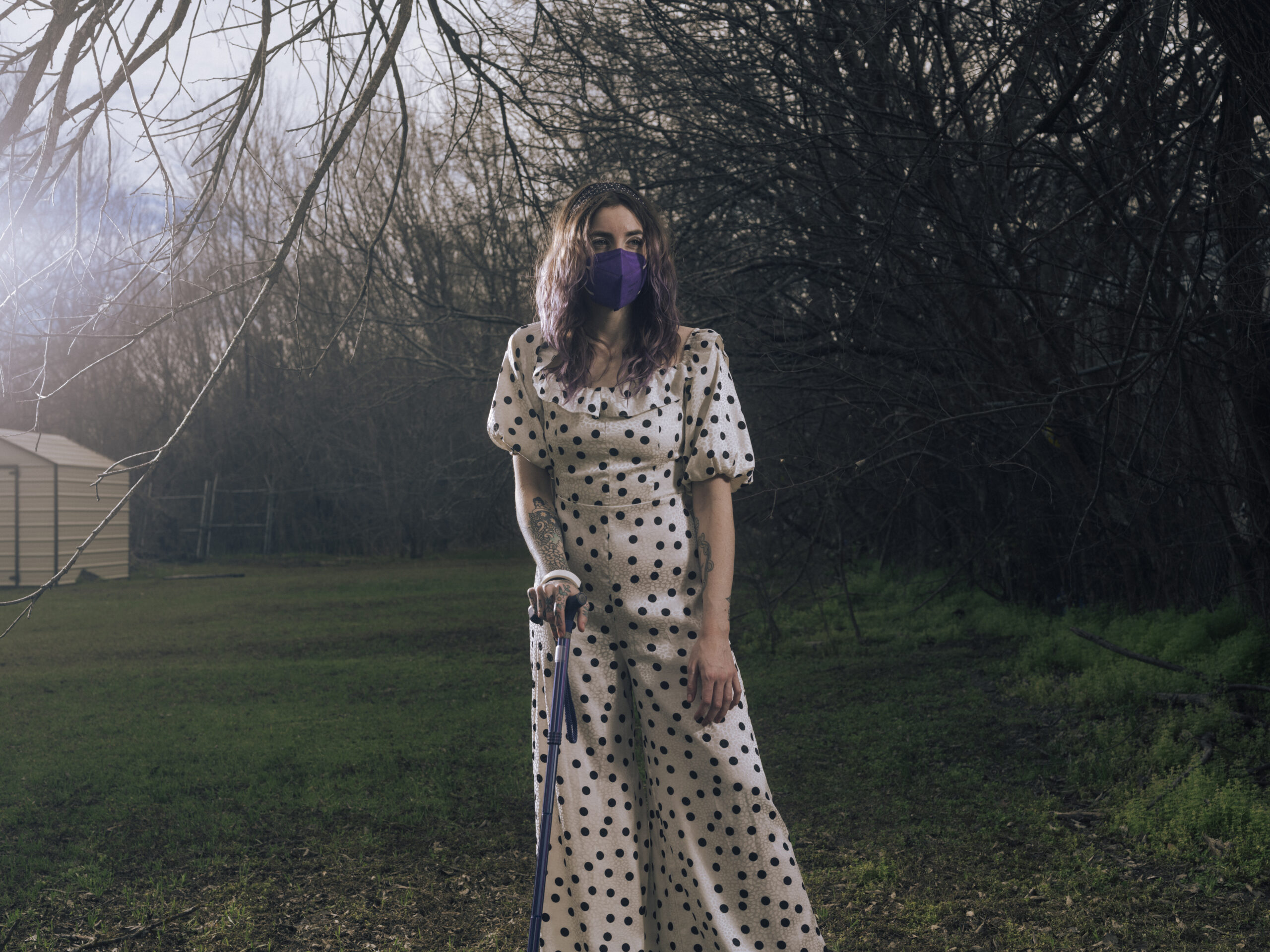
Before the pandemic, Katie Drackert worked almost full-time as a performing artist, often for LGBTQ+ audiences. In March 2020, they received a grant from the city of Austin to put on a variety show—plans that were quickly derailed by the Coronavirus epidemic and the temporary shutdown of the arts that followed.
“I was busy and very active and very focused on my artistic career,” they recalled of their prepandemic days.
They got COVID for the first time in December 2021 at age 27 during the wave of infections caused by the omicron variant. Early reports suggested the omicron variant caused milder illnesses—a Fox News commentator even suggested deliberately allowing the illness to spread in order to help build immunity—a perception that persisted even after experts tried sounding the alarm about its ongoing risks.
“I had body aches from hell. I felt like I got played because some people said it was mild,” they said.
Despite this, they’d been careful about getting vaccinated and wearing a mask because Drackert had always struggled to get over illnesses, even the common cold. Unfortunately, they were scheduled to get a booster shot a week after they got sick. Instead, they tried the monoclonal antibody treatments, which only seemed to make them feel sicker.
“I would completely lose my breath just walking the six steps from the bed to the bathroom,” they said.
Drackert was severely ill for at least 10 days the first time they got COVID, and symptoms lingered after they started testing negative. As soon as they felt themselves improving, Drackert pushed themself to do an outdoor performance. This proved disastrous for their health.
“It triggered such an intense flare up, I was having so much trouble breathing,” Drackert said. “After that, I was doomed. Pushing myself too soon really messed me up.”
Lingering symptoms included chest and lung pain and difficulty breathing—they’d had asthma flare-ups before when they got sick but now suffered from it all the time. They would experience sharp chest pains. They also had intense fatigue and brain fog. And they developed severe depression for the first time in their life, which both Brode and Al-Aly said is common in long-haul COVID patients.
Then Drackert got COVID again in May 2022, when they “succumbed to peer pressure” by briefly removing their mask at a crowded event.
“I heard the numbers were lower, and it was such a mistake,” they recalled with a sigh.
Even though they took the COVID treatment pill Paxlovid—an antiviral medication developed by Pfizer—this time, they could still see and feel the effects of their repeated infections.
“I look at old pictures of me before I had COVID, and I’m like, that’s a different person, even the look in my eyes. I feel like I aged a lot faster.”
Camille is another Texan who underestimated the risks of long COVID. (Because she’s part of a long COVID advocacy group that illegally posts stickers in public places—a form of graffiti—the Observer has agreed to use only her first name here).
“It’s pretty rare; it usually affects people with preexisting conditions and older people,” she thought.
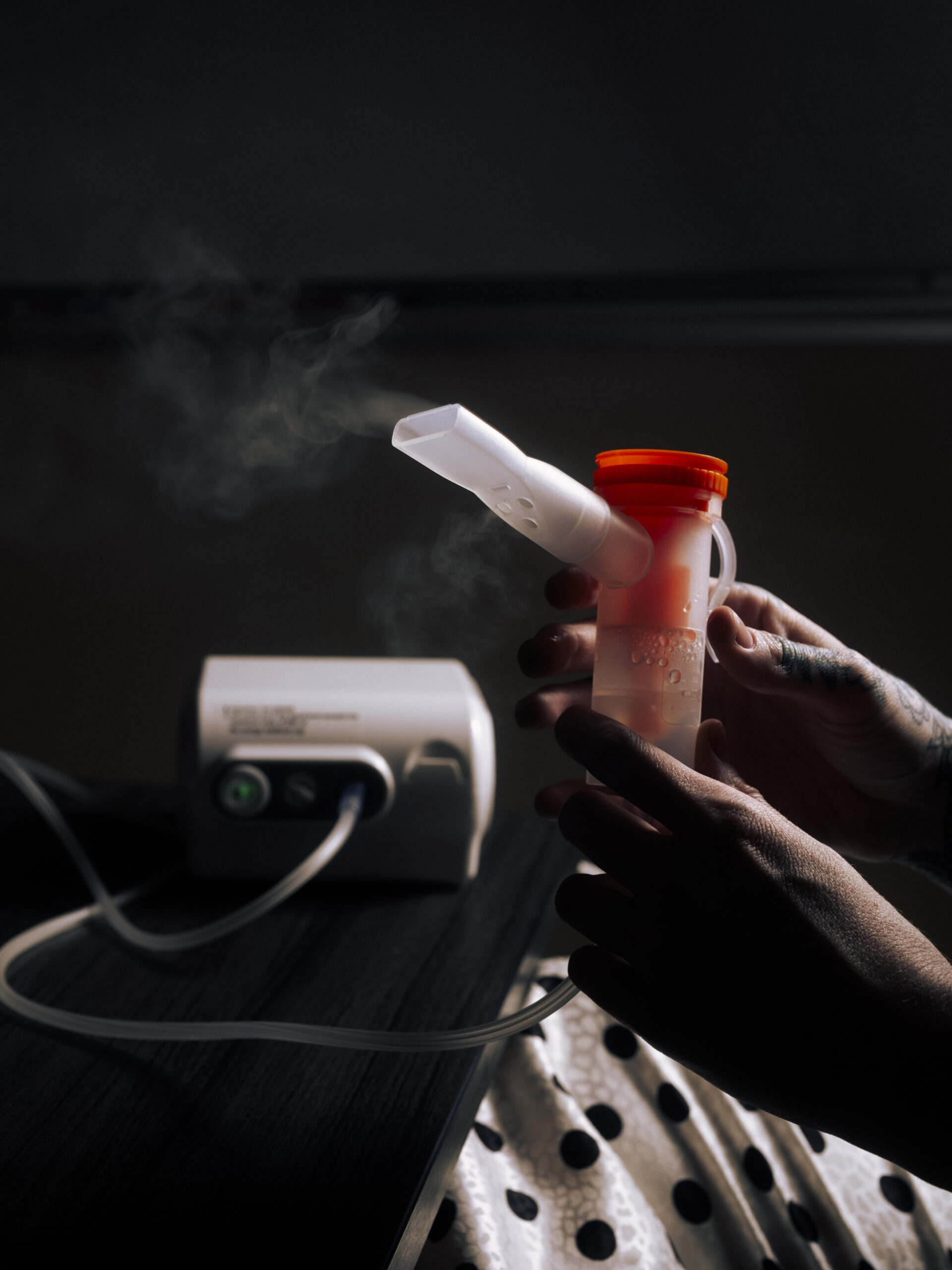
Camille, a graphic designer from Austin, was just 30 years old and healthy. She also cited President Joe Biden’s declaration that the “pandemic is over” as a factor in her decision to drop masking and return to more normal activities.
“So I really was under the impression, since no one was masking anymore, that, okay, things are safer now,” she said.
Then a COVID-19 infection hit her hard.
“I tested positive for 16 days total, and then I just remained sick for months,” she said. “I would stand up, and within seconds, my heart would go into tachycardia. I’d be putting on my deodorant, and my heart rate would hit 140-something.”
She couldn’t work and had to move back in with her mother.
“I couldn’t take care of myself; I was on the couch or in bed 95 percent of the time,” she said.
Just as Ramos struggled to get diagnosed, Camille found it difficult to get medical professionals to take her seriously.
“I had a doctor who told me back in January that I was just depressed,” she said. “I needed to just take Lexapro [an antidepressant] and go back to work and push through it.”
The first step towards healing for many of Brode’s patients is simply hearing him validate their experience. Friends, loved ones, and even medical professionals frequently cast doubt on long-haulers’ suffering or cannot connect the dots about their condition. Brode also suggested the hurried nature of many medical appointments contributes to the poor care long COVID patients frequently receive.
“In our own patients, our data shows they can have up to 18 new symptoms,” Brode said. “And if you only get 15 minutes with a doctor, they’re not going to get that in-depth understanding or care.”
Doctors, especially general practitioners, must keep up with countless developing medical treatments and research into diseases. “A doctor’s interest and ability to stay up [to date] with the evolving literature is limited,” Brode said.
In addition, there’s currently no simple diagnostic test that can show whether or not a person has long COVID.
“I think a lot of patients hear, ‘The tests are normal, so you’re fine,’” Brode added. “I try to emphasize that it just means it’s long COVID, and we can’t test for that. Our data shows they’ve usually bounced between four of five providers before they receive that diagnosis.”
Al-Aly explained that modern medicine has a long and unfortunate history of ignoring or denying the experiences of sick patients suffering from poorly understood conditions, essentially accusing patients of having a mental illness rather than a physical, underlying condition. He compared it to multiple sclerosis or epilepsy, in which patients were once accused of being crazy until technology advanced to the point where their conditions could be established.
“Just because we don’t completely understand [long COVID], it is almost like history is repeating itself,” Al-Aly said. “People say ‘Oh yeah, it’s all in your head’ instead of acknowledging the limitations of our knowledge.”
Brode stressed that helping long-haulers learn about the experiences of others can help them feel validated. Ramos described a painful vibration in her lips, fingers, and other extremities. Brode explained that numerous people have come to him with a similar sensation, often prefacing it with “you’re never going to believe this.” Some compare it to feeling like their body is trembling but without an actual, corresponding tremor.
“We actually don’t even have a medical term for this,” Brode told me. “But hundreds of patients have described this to me.”
There is a growing body of research suggesting a possible cause of PEM in long COVID patients. A 2021 study was the first to suggest that microclots, tiny blockages that the body’s natural systems seem unable to clear easily, form in the body’s capillaries after exercise in long haul patients, providing one potential angle for further research. But a great deal about the illness remains mysterious.
Like the typical long-hauler, Ramos bounced between medical professionals as she tried to find answers. Doctors were often reluctant to perform all the tests necessary to diagnose or properly treat her. In the summer of 2022, she was constantly sick and forced to move back into her parent’s house.
She landed in the hospital in August of that year, where physicians began noticing unusual patterns in her blood work, such as imbalances in her levels of electrolytes and her levels of creatinine, a waste product of the kidneys. But since she was uninsured, the hospital simply stabilized her and sent her home with instructions to get more tests.
Supported by her family, she exercised as much as possible but was winded simply from walking around the block. She attempted to switch to a super “clean,” healthy, plant-based diet, but even simple foods seemed to upset her body. Eventually, she was vomiting several times per day; even watching TV was sometimes so disorienting that it would make her throw up.
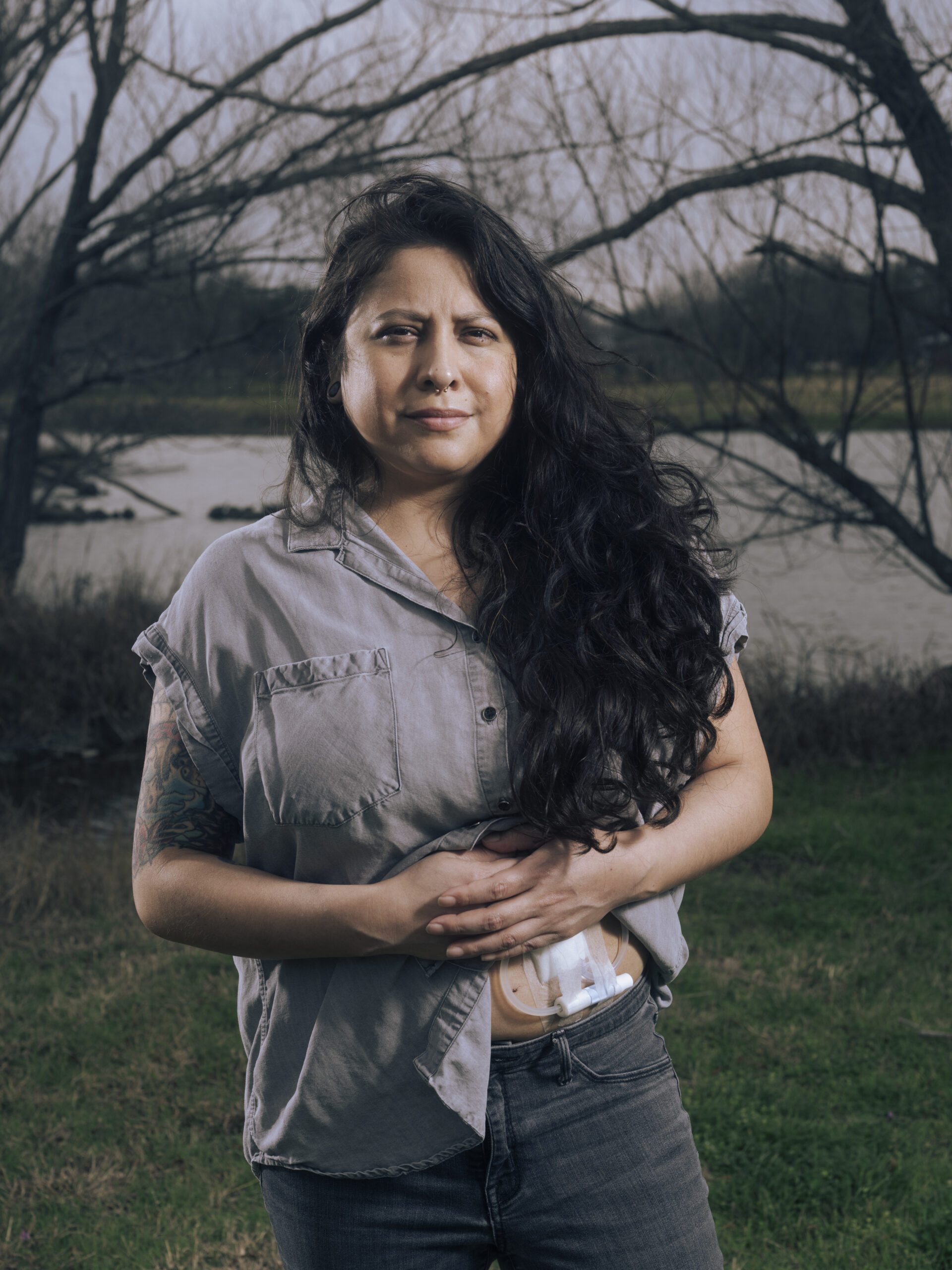
As her condition worsened, she tried to avoid another costly hospital visit, holding out until she could get onto a plan through the national health insurance marketplace, which became active in January of last year. She was quickly checked back into the hospital, where her blood work showed signs of kidney failure. Even then, doctors were reluctant to give her a formal diagnosis or put the blame on long COVID. Placed on emergency dialysis, it was there she met a curious nurse who listened to her story and helped her find a diagnosis, one that she’d eventually get the doctors to accept as well: Granulomatosis with polyangiitis, a rare form of vasculitis that matched up with nearly all of her symptoms, from the initial sinus and ear infections to her eventual kidney failure.
Treatment for this condition requires a complicated combination of steroids and immunosuppressant drugs, including low doses of chemotherapy. Ramos can pay for her ongoing treatment, which now involves starting every day around 4 a.m. with nine hours of home dialysis, through the help of the American Kidney Fund. She’s currently awaiting approval for a kidney transplant through St. David’s Medical Center; even though she has a donor lined up, getting approval for a transplant is an often lengthy and difficult process.
And it’s all left Ramos vulnerable to reinfection from COVID or other serious illnesses. She is now among the immunocompromised who continue to struggle the most to avoid the ongoing pandemic. She’s risking her health every time she goes shopping or tries to visit with friends or family.
“I feel incredibly isolated and completely outside of society. The amount of times I have to say no to events …” she trailed off.
The pain was visible on her face as she recalled her former life.
“The old Vanessa was a social person; she was active; she could go camping on a whim and do all these things that fed me mentally,” she added. “Now, I can’t even function. It was stolen from me, and it makes me feel incredibly isolated and angry at the people who can get COVID five times and be fine, while I got it once, and it destroyed my life.”
When the Observer spoke with her, Ramos was feeling relatively well and able to join her spouse on errands, but that varies from day to day.
”I’m grateful that my disease is somewhat in remission right now, but I’m still not a functioning person,” she added.
Katie Drackert also struggles with feeling isolated from the queer and performance art communities to which they used to belong, especially since almost all of their former colleagues and friends seem to have moved on and forgotten about the pandemic.
“When everyone around you is living in a different reality where COVID is over or COVID is mild, you feel a little bit like you’re losing your mind,” they said. “I don’t feel like I’m part of those communities anymore because they refuse to accommodate [this illness].”
Getting involved with advocacy efforts was frightening initially because they felt like COVID was the “elephant in the room” that no one wanted to discuss. Drackert feared being further ostracized from their community or hampered in looking for jobs, a concern the Observer heard from other long-haulers, including Camille.
“I thought if I pushed back on COVID and things that I felt community leaders were doing wrong, they wouldn’t want to book me,” Drackert said.
The turning point for Drackert was taking part in an April 2023 Federal Drug Administration panel where long COVID patients were invited to share their experiences in front of a panel of experts. Feeling heard by medical professionals and other long-haulers inspired them to be more outspoken. Still unable to perform, even outdoors, without harming their health, Drackert pivoted to new ways of influencing the community.
“I kept trying to perform, and then I kept having, five days, six days a week where I was just knocked out, and I was like, ‘This isn’t sustainable. I can’t do this. I have to let go of this part of me,’” they recalled.
Drackert founded an organization called Clear the Air ATX, which lends HEPA-grade air purifying filters to artists, musicians, and other organizations hosting events to encourage “COVID safer events.” They were inspired by a similar project in Chicago called the Clean Air Club. After a small but successful crowdfunding campaign, they’ve started fielding requests to loan out the filters. At the time of publication, the organization had publicly announced four of these safer events, ranging from art openings to a dance party hosted by local cooperative radio station KOOP. In total, they received over a dozen requests for air filters for events in the first month after making them available.
Camille is part of another group fighting back against public apathy around COVID: the international advocacy group called the Berlin Buyers Club. The name is an allusion to the home of the group’s founder and to the Dallas Buyers Club, the radical AIDS support group that in the 1980s purchased and shared lifesaving experimental drugs. Like the members of that historic group, the founders of the Berlin Buyers Club feel left behind. Their homepage succinctly sums up their motto: “The government lied. COVID destroyed us. We are young. We want our lives back.”
Both the Berlin Buyers Club and Clear the Air ATX hope to raise awareness about the continued dangers of the Coronavirus and the risks of long COVID in a way that is hip, clever, and shareable—designed to appeal to younger audiences that frequently get their news and information from TikTok, Instagram, and other social networks. For Valentine’s Day, Drackert commissioned cartoonist Rachael Harmon to create stickers with sayings like “No Mask, No Ass” on a conversation heart-style candy and “Pure Love” next to a personal HEPA air filter.
The Berlin Buyers Club has taken it even further: Camille and friends created a series of stickers with eye-catching mottos that club members have plastered all over lamp poles and utility boxes in several Texas cities and around the world. One bright red sticker reads: “We are living in a mass disabling event—don’t ignore long COVID.”
“Everything I read in the media up until I got long COVID was framing [it] as something that happens to older people because older people tend to get more severe illnesses, and that’s a complete lie,” Camille said.
With Camille’s help, the club rented a pair of billboards in Converse and Kyle in November, reading “I miss myself / I have long COVID” and “We’re still sick #CureLongCovid.”
In addition to urging young people to take more personal responsibility around the pandemic, Camille and Katie Drackert hope their efforts will raise awareness about the need to improve air quality in public spaces and commercial buildings, which many experts agree is a key step toward preventing future infections.
Ziyad Al-Aly said we must “update building codes so we require ventilation and air filtration systems.”
“COVID-19 is an airborne virus where the biggest risk of spread is through enclosed, poorly ventilated indoor areas when they are crowded during periods of high cases,” Brode added. “Certainly, investment in ventilation infrastructure would not only decrease the risk of COVID and other airborne illnesses, but also potential future viruses and pandemics.”
Al-Aly called the ongoing waves of infection and development of new long-haulers, “an invisible crisis of the aftereffects of the pandemic.”
“We’re literally moving on without really looking at the mayhem it produced,” he added. “We’re all sick and tired of this pandemic, but in our itch to move on, we’re forgetting to look back and say ‘Oh my Lord!’ it destroyed the lives of so many people and continues to do so.”
He likened the desire to move on without repairing the damage to abandoning a city after it’s been leveled by an earthquake.
“These long COVID advocates are correct: We shouldn’t feel helpless and resigned that everyone is going to get and keep getting COVID,” Brode said. “In the absence of a targeted cure, the best thing we can do for now is try to prevent long COVID in the first place.”
A comprehensive approach to preventing COVID-19 infections and subsequent long COVID cases would combine improved ventilation with better vaccine uptake (including more frequent use of boosters) and improved care for existing long-haulers.
“I think the public is telling us they’re sick and tired of these stopgap measures.”
Staying up to date on vaccines and boosters can dramatically reduce the likelihood of getting long COVID, in addition to reducing the risk of hospitalization, according to several studies and experts like Peter Hotez, dean of the National School of Tropical Medicine at Baylor University and a professor of pediatrics and molecular virology and microbiology. Hotez was an important part of the team that developed Corbevax, the open-source COVID-19 vaccine that helped immunize millions of people in India and Indonesia.
Unfortunately, in America, where vaccines are more widely available, fewer and fewer people are keeping up to date with their boosters.
“Not enough Americans are getting the new vaccine,” Hotez told the Observer. “[They’re] not aware of the fact that this new annual immunization is quite different from the previous one because it’s targeting the current lineages, the current strains, which are so different from the original lineage.”
According to the CDC, as of January 2024, only 21.5 percent of adults and 11 percent of children in the United States had received the latest vaccine. That’s compared to almost 50 percent who lined up for annual flu shots in the same period. Hotez hoped there would be campaigns to increase public awareness about the need to get boosted.
“You’re getting this booster not only to prevent you from going to the hospital but to reduce the likelihood that you will get long COVID,” he added.
For Al-Aly, the poor uptake of the current batch of boosters and the refusal of medical professionals and the general public to resume masking even when infections increase are signs that we need to invest in more permanent, sustainable solutions to this illness.
“I think the public is telling us they’re sick and tired of these stopgap measures,” he said.
One promising possibility is the development of intranasal COVID-19 vaccines. By applying the vaccine to the mucous membranes, these treatments would help create a natural, biological immunity directly where the disease enters the human body.
“Having intranasal oral vaccine-induced strong mucosal immunity acts almost like a virtual shield to block the infection, so you don’t have to mask,” he explained.
In addition, these vaccines could also last longer: up to five years, Al-Aly said.
For the relatively lucky long-haulers, symptoms may fade naturally over the months following their initial infection. Camille, for example, can work part-time again. But for many others, the struggle continues almost unabated.
These are people who are “really severely disabled, bedridden, and cannot work. … Their lives are upended, their marriages are ruined, their relationships are ruined, and they lost employment,” Al-Aly said.
The uniqueness of each individual’s illness only compounds the difficulty of developing effective treatments. “Every person is their own unique disease or their own unique phenotype,” he continued.
Brode takes a step-by-step approach for patients who come to the Post-COVID clinic at UT Health Austin. The first step is to help the patient learn techniques to manage their energy and reduce post-exertional malaise as well as “structured and intentional rehabilitation focused on their physical, cognitive, or mental health symptoms,” he said. If that doesn’t work, they can try conventional medications, which are normally used to treat symptoms like insomnia, nerve pain, or fatigue.
But from there, the options gradually escalate to more experimental, potentially expensive, forms of treatment. These include antiviral medications, which could help clean up fragments of the Coronavirus that may remain in the patient’s body and continue to cause harm even after the main infection passes. Other options include medications to treat chronic inflammation and treatments that improve circulation or help the body use oxygen more efficiently.
Katie Drackert received a treatment called Enhanced External Counter Pulsation (EECP), originally designed for people who have heart disease or severe circulation disorders. For them, the benefits have been remarkable, though unpredictable.
“I feel like I have more capacity now,” Drackert said. “There are times now where I can dance and not trigger malaise, not trigger vertigo. And then there are times I just can’t.”
Brode emphasized the limitations of these kinds of experimental treatments: “There are some preliminary case reports showing that it can be effective in improving long COVID fatigue and breathlessness, but it’s important to know that research is preliminary, without a control group, and the research has been funded by organizations that provide the therapy.”
Because these treatments are still experimental, most insurance plans will not cover them.
“I don’t want to hide treatments that patients are telling me are effective for them, but I also don’t want to hype them up when there may be a financial burden, and there’s no scientific basis to say it will work for all patients with long COVID,” Brode said.
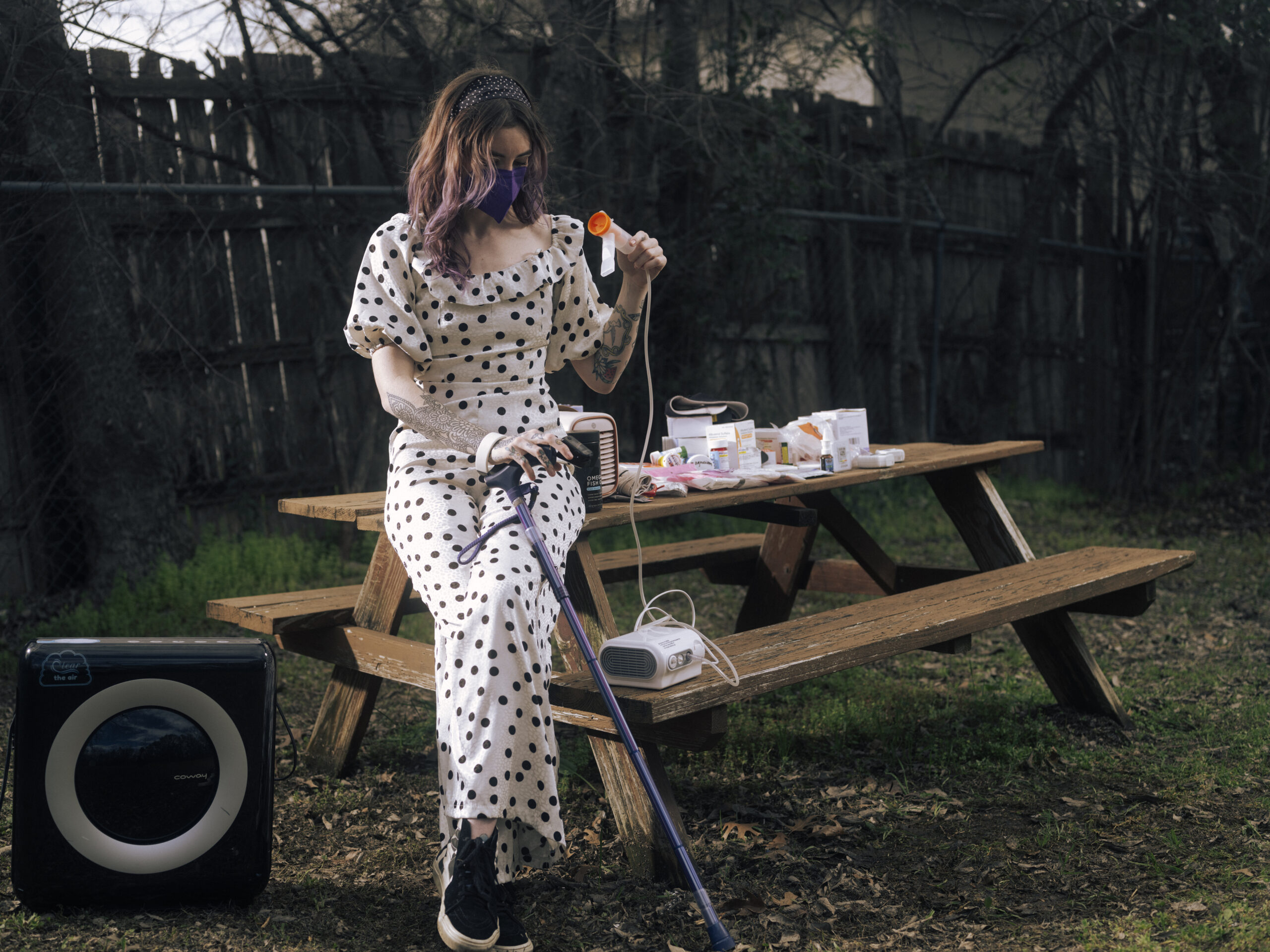
Al-Aly concurred that there are new treatments under development that could help—for example, a study published in December about a drug called SIM01 showed promising preliminary results through altering patients’ gut microbiomes to improve their immune response. Six months into the study, the group receiving SIM01 showed improvement in fatigue, memory loss, and other symptoms versus a group given a placebo.
However, the larger problem, according to Al-Aly, is that research into long COVID treatments is proceeding at a “snail’s speed,” especially when compared with the rapid development of the initial vaccines and considering the massive number of long-haul COVID sufferers.
“You have this huge problem, and you’re addressing it with these small Band-Aid solutions,” Al-Aly said. “We need a much more robust and much more comprehensive and much more ambitious effort to really address the needs of people with long COVID.”
On January 18, Al-Aly appeared before the U.S. Senate Committee on Health, Education, Labor, and Pensions for a hearing about long COVID, which he called a promising first step toward the kind of larger response he believes is necessary.
“I think it was well received by the senators and the patient community,” he said. “We need to keep the conversation going. How do we as a nation deal with long COVID?”
He doesn’t believe there is an adequate, clear plan in place: “Hearing each other is fine. Talking is fine. … But you know what helps people with long COVID? Action.” He stressed that we must “deliver treatment, care, and support systems for the people impacted.”
“We need to keep pushing for this national conversation,” Al-Aly said. “We cannot go through a pandemic and not learn from it. We cannot go through a pandemic without dealing with the aftereffects.”
Despite the pandemic fatigue, he said, we owe it to the people who are sick to do much more.
“We want to move on, but we cannot just ignore and turn our backs on the people with long COVID,” Al-Aly concluded. “That’s not going to be acceptable.”
